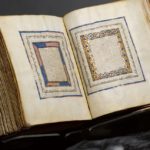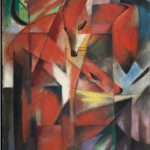
Tucson, AZ.- “The Legacy of Surrealism: Selections from the Permanent Collection” goes on exhibition at the Tucson Museum of Art on June 11th and remains on view until September 18th. Surrealism, first coined by Apollinaire in 1917 to describe a movement that addressed the intersection of avant-garde art with technological progress, encompasses the free-form practice of automatism, the chance reliance on accident, the shapes and forms of biomorphism, and the use of found objects. Surrealism is an outgrowth of Dada, the avant-garde art form that emerged in Zurich in 1916 (ending in 1923) and spread throughout Europe and the United States as a reaction to World War I and modernist abstraction. Both movements railed against artistic constraint and bourgeois values, and shared a concern with philosophy, psychology, poetry, and social revolution. This exhibition presents works by several artists who are identified as Surrealists along with modern and contemporary artists who have been influenced by Surrealist philosophy and stylistic tendencies.
Surrealism began in France by several artists who had been engaged in Dada’s emphasis on moral revolt and the conflation of art making with everyday life. When the Dadaists disbanded in 1923, many continued artists their interest in avant-garde art making, newly articulated by André Breton, whose Manifesto of Surrealism published in 1924 called for a continuation of nonconformist activity and a focus on desire and surprise. To Breton, Surrealism was marked by “a certain psychic automatism that corresponds rather closely to the state of dreaming.” Two types of Surrealism emerged, inspired by the writings of Sigmund Freud, whose theories of the unconscious mind and the mechanism of repression gained widespread interest in intellectual and artistic circles at the turn of the twentieth century. Freud’s theories concentrated on the visionary, the poetic, and the metaphoric power of the unconscious, manifested by the Surrealists in either improvisational automatic writing, drawing, and painting, or the illusionistic and realistic depictions of dream-inspired images.

Unlike the pure abstractions of modernist painters who worked away from tangible form, the Surrealists attempted to work toward an interior image to achieve a new kind of perception unconstrained by conscious. Surrealism formally ceased by 1945, but many of the artists who were associated with the movement continued to create art within its artistic parameters into the 1960s and 1970s. The free-form effects of automatic painting and writing, along with the idea of tapping into the unconscious, took hold in the form of Abstract Expressionism in the 1940s, and subsequent realist iterations of the dream has surfaced in the decades that followed until present day. While the aim to ignite a social revolution through Surrealist practices may have long been replaced in today’s art by Post-Modern strategies, the aesthetic legacy of this movement continues to intrigue and inspire artists today.
First established in 1924 as the Tucson Fine Arts Association, the Museum made its home in the Kingan House on Franklin Street in the El Presidio Historic District. In 1954 the association was officially renamed the Tucson Art Center to establish our exhibition and education mission. In 1975 the Tucson Art Center moved to its present location and became the caretaker of five historic properties (La Casa Cordova, Romero House, Edward Nye Fish House, Stevens/Duffield House and the J. Knox Corbett House) and changed its name to the Tucson Museum of Art to reflect its collecting activities. Today the Tucson Museum of Art and Historic Block encompasses an entire city block in historic downtown, and features original and traveling exhibitions focusing on Art of Latin America, Art of the American West, Modern and Contemporary Art and Asian Art as well as tours, education programs, studio art classes, and Museum Store to delight and educate visitors. The Tucson Museum of Art serves the city and surrounding regions and is committed to broadening public access to the arts, enriching daily life. Visit the museum’s website at … http://www.tucsonmuseumofart.org








